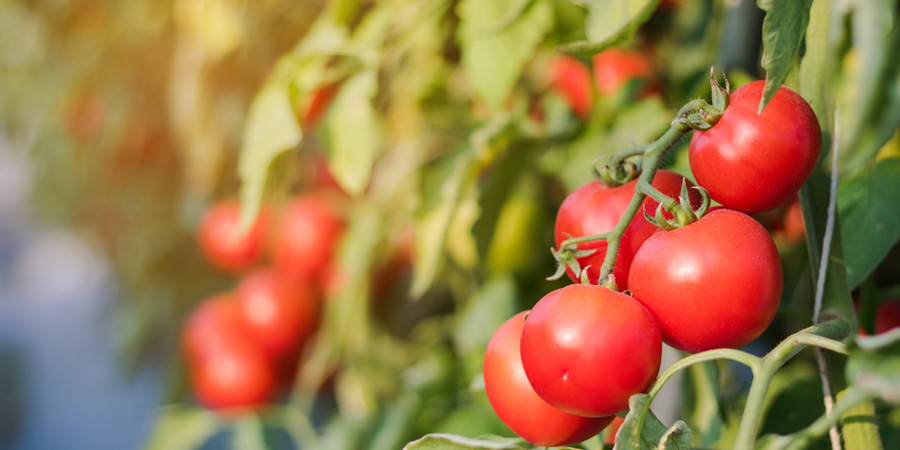Potential positive effects of consuming more vegetables on biodiversity and land use

According to several emerging studies, a shift toward a diet with more fruit and vegetables and less animal-derived protein’s is not only associated with the reduction of mortality from cardiovascular diseases and some cancers (Yip, 2019) but also has benefits on the environment such as a reduction in greenhouse gas emissions and land use (Eustachio, 2021). In fact, animal-derived foods require more land per kcal dietary energy produced than plant-based foods. For instance, in UK, 85% of the farmland is used to rear animals while animal-based products provide only 32% of dietary energy consumed. Replacing meat by fruit and vegetables could then reduce land use, on a per-kcal basis (De Ruiter, 2017). Global studies have shown that food systems changes could reverse the negative trends in biodiversity, on different environmental indicators (Leclère, 2020).
This study explores how biodiversity conservation, climate change mitigation and public health can be enhanced in a politic way, at a national level in Great Britain. In order to meet the increased need for vegetables, authors examined two scenarios where land used for meat production is converted to horticultural production and natural land covers.
Two scenarios and three example cases were considered to evaluate the potential impacts of land use shifts on biodiversity
In order to examine the potential impacts of land use shifts on biodiversity, two scenarios were created:
- A scenario of domestic production only (DO): which consists of expanding horticulture in Great Britain to meet all additional demand for vegetables. In this scenario, 5% of grazing land is converted to horticulture, and 18% to natural land cover.
- A scenario of domestic and import productions (DI): where current domestic production/import ratios are maintained. In this scenario, 3% of grazing land is converted to horticulture, and 27% to natural land cover.
A gain for biodiversity, with an increasing trend in the number of species gaining in average habitable area
Across all Great Britain, the average habitable area of 814 species is estimated to be 28% of the land area where land use could change.
For each 10% of grazing land converted to horticulture, average habitable area decreases by 1 to 2%, while every 10% of grazing land converted to natural land cover leads to a 6% increase of average habitable area.
These results show that, on average, conversion of grazing to horticulture leads to a small loss of biodiversity but it is outweighed by the gains from converting the surplus grazing land to natural cover. All land conversion scenarios showed a potential gain of biodiversity, with more species gaining in average habitable area than losing.
Indeed, for each specie losing >10% habitable area, approximately 6.3 and 9.8 species will gain >10% habitable area, with the DO and the DI scenario respectively. Land conversion scenarios show that maintaining the domestic production/import ratio has larger benefits for biodiversity.
Climate change negative impacts on biodiversity could be mitigated by land use changes associated with dietary shifts from less meat to more vegetables
Climate change has strong negative impacts on biodiversity. Indeed, when including climate change in the scenarios, the average habitable area dropped from 28% to 21%, and the number of species losing habitable area exceeded the number gaining habitable area: for each specie gaining >10% habitable area, 4.1 and 2 species will lose >10% habitable area, respectively under the DO and DI scenario.
These results show that climate change leads to a loss of habitable area larger than all the land conversion scenarios. Although, as shown in table 1, climate change impacts would be mitigated by land use changes associated with a dietary shift from less meat to more vegetable consumption. For example, with climate change, the average habitable area increases from 21% without land changes to 23% and 25% with the DO and DI scenario respectively.
Grazing land conversion scenario |
Average habitable area |
Number of species with >10% habitable area increase |
Number of species with >10% habitable area decrease |
| Baseline : no land conversion, without climate change | 0,283 | – | – |
| Scenario DO, without climate change | 0,319 | 485 | 78 |
| Scenario DI, without climate change | 0,343 | 599 | 63 |
| No land conversion, with climate change | 0,205 | 23 | 649 |
| Scenario DO, with climate change | 0,233 | 125 | 485 |
| Scenario DI, with climate change | 0,253 | 213 | 406 |
Table 1: Projected biodiversity responses to land use and climate change scenarios (Adapted from Ferguson-Gow et al., 2022)
According to the method employed, the present study concludes that the best outcome for biodiversity in Great Britain is to maintain the domestic production/import ratio (Scenario DI). However, the potential impact of diet changes beyond national borders was not considered in the study. Also, an association between land use changes and a shift toward healthier diets could have benefits for biodiversity and potentially increase resilience to climate change. The dietary energy equivalent replacement of meat with vegetables has the potential to reduce land use for agricultural production and freeing up land for other uses.
Based on : Ferguson-Gow et al., Potential for positive biodiversity outcomes under diet-driven land use change in Great Britain. Wellcome Open Research 2022, 7, 147.
- There is a potential for gains to biodiversity: more species would increase their habitable area than species that would loss some
- Maintaining the domestic production/import ratio is more effective than relying on local production.
- Negative climate change impacts on biodiversity could be mitigated by land use changes associated with dietary shifts
